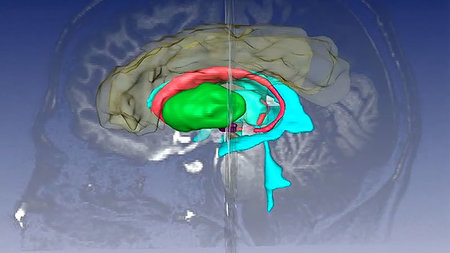Object recognition
Based on our earlier research that investigated the concept of perception as active pattern generation, we aim to combine attention and object recognition in a single interconnected network. We will demonstrate the performance on object recognition in natural scenes and provide a significant step towards the understanding of vision as a constructive process. Learning feedforward and feedback weights will result in model cells which encode with increasing hierarchy larger proportions of the visual field and more complex stimulus properties. Feedback allows to resolve ambiguities and to reveal visual details. This project is funded by the DFG.

A model of the ventral pathway and the frontal eye field for attention and object recognition. From the image, different feature maps are obtained (color and orientation) and each feature at each location is represented with its conspicuity by a population code. Learned feedforward W and feedback weights A connect the areas with each other.
 |
Wiltschut, J., Hamker, F.H. (2009) Efficient Coding correlates with spatial frequency tuning in a model of V1 receptive field organization. Visual Neuroscience. 26:21-34. PDF-document |
Associated projects
EU project EYESHOTS (Heterogeneous 3-D Perception across Visual Fragments) (2008-2011).
DFG grant The cognitive control of visual perception and action selection. DFG HA2630/4-2 (2011-2014).
Selected Publications
Antonelli, M., Gibaldi, A., Beuth, F., Duran, A. J., Canessa, A., Chessa, M., Solari, F., del Pobil, P., Hamker, F., Chinellato, E., Sabatini, S. P. (2014)
A hierarchical system for a distributed representation of the peripersonal space of a humanoid robot
IEEE Transactions on Autonomous Mental Development, 10.1109/TAMD.2014.2332875.
PDF-document
Teichmann, M., Wiltschut, J., Hamker, F.H. (2012)
Learning invariance from natural images inspired by observations in the primary visual cortex.
Neural Computation, 24(5): 1271-1296.
PDF-document
Wiltschut, J., Hamker, F.H. (2009)
Efficient Coding correlates with spatial frequency tuning in a model of V1 receptive field organization.
Visual Neuroscience. 26:21-34.
PDF-document
Hamker, F.H., Wiltschut, J. (2007)
Hebbian learning in a model with dynamic rate-coded neurons: an alternative to the generative model approach for learning receptive fields from natural scenes
Network, Computation in Neural Systems, 18: 249-266.
PDF-document
Hamker, F. H. (2005)
The emergence of attention by population-based inference and its role in distributed processing and cognitive control of vision.
Journal for Computer Vision and Image Understanding. Special Issue on Attention and Performance in Computer Vision, 100:64-106.
PDF-document





